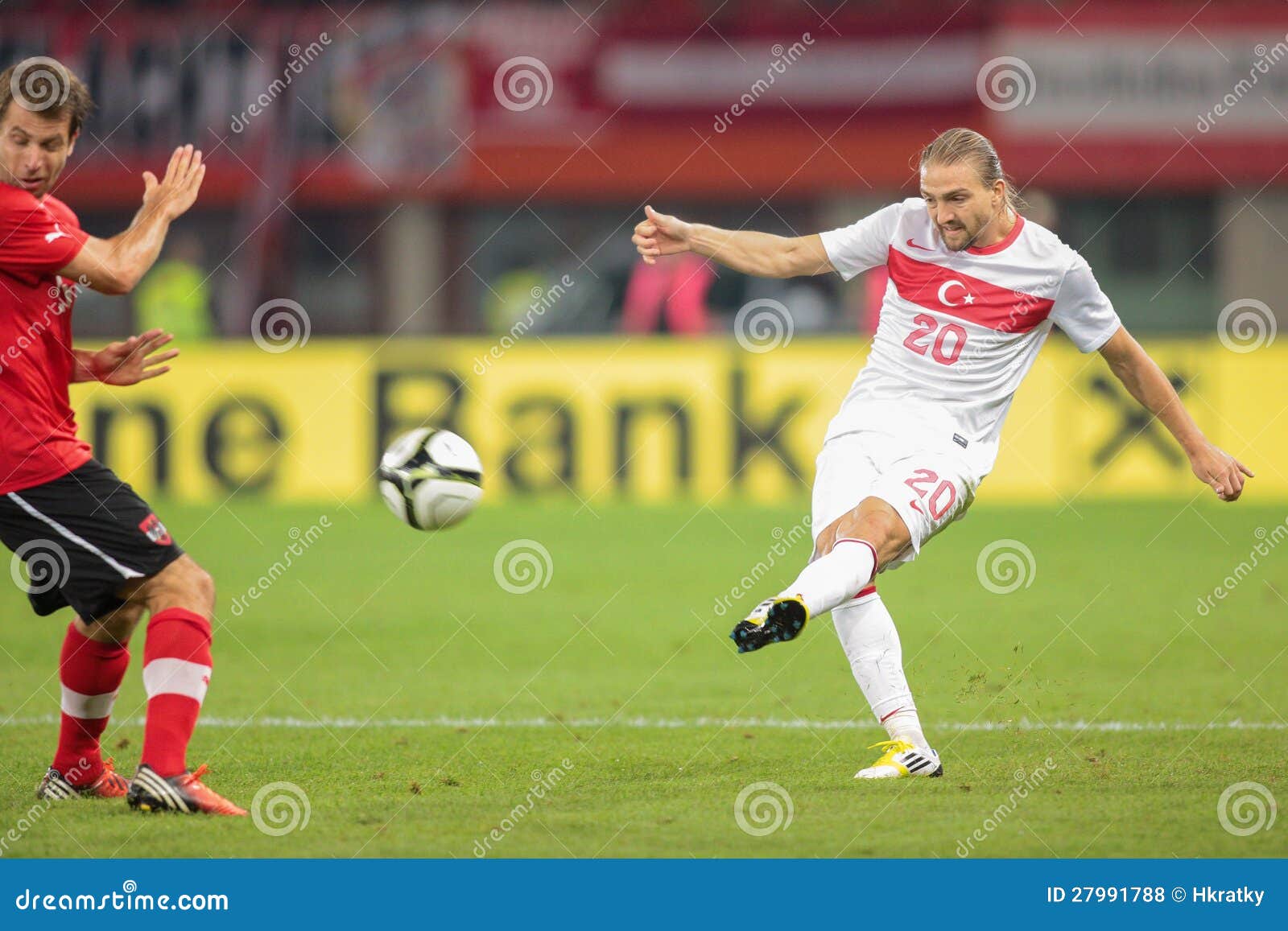Historical and Cultural Comparisons

Turkey vs austria – The rich tapestry of Turkey’s and Austria’s cultures is an intricate blend of historical events, diverse ethnicities, and distinct geographical influences. Throughout centuries, both nations have undergone profound transformations, leaving an indelible mark on their cultural identities.
Turkey and Austria locked horns in a thrilling encounter, their rivalry spilling onto the field. But as the dust settled, the attention shifted to the Copa America standings , where the battle for continental supremacy raged on. The intensity of the tournament mirrored the fervor of Turkey and Austria’s clash, with each team vying for a chance to etch their name in history.
In Turkey, the Ottoman Empire’s legacy continues to resonate. The empire’s vast reach and cultural exchange left a profound impact on the region, blending Islamic traditions with ancient Anatolian customs. After the empire’s collapse, the Turkish Republic emerged, embracing secularism and Western influences while preserving its cultural heritage.
Austria, on the other hand, has a long and storied history as the heart of the Austro-Hungarian Empire. Its cultural landscape reflects the diverse influences of its constituent regions, including Slavic, Germanic, and Hungarian elements. The empire’s dissolution after World War I led to the establishment of the Republic of Austria, which has since developed a distinct national identity.
The recent clash between Turkey and Austria has sparked debates about the power dynamics in Europe. Meanwhile, across the continent, football enthusiasts are eagerly awaiting the upcoming match between Romania and the Netherlands. While the two nations have faced off several times in the past, this particular encounter promises to be a thrilling spectacle.
With both teams boasting talented players and a rich history, the romania vs netherlands prediction is highly anticipated. As the rivalry between Turkey and Austria continues to unfold, the football match between Romania and the Netherlands serves as a reminder of the diverse and captivating sporting events that shape our world.
Religion and Ethnicity
Religion plays a significant role in shaping the cultural fabric of both Turkey and Austria. In Turkey, Islam is the predominant religion, influencing societal norms, values, and artistic expressions. Austria, on the other hand, has a predominantly Christian population, with Catholicism being the largest denomination. However, religious diversity is present in both countries, with minority religious groups contributing to the cultural mosaic.
Ethnicity also contributes to cultural diversity. Turkey is home to a diverse population, including Kurds, Armenians, and Circassians, each with its own unique traditions and customs. In Austria, the population is predominantly Austrian, with significant immigrant communities from neighboring countries and beyond.
Cultural Traditions and Practices
The cultural traditions and practices of Turkey and Austria reflect their distinct historical and ethnic influences. Turkish culture emphasizes hospitality, family values, and respect for elders. Traditional music and dance are an integral part of Turkish social gatherings, often accompanied by the enchanting sounds of the bağlama (a stringed instrument).
Austrian culture is renowned for its classical music, opera, and theater. The Vienna State Opera and the Salzburg Festival are world-renowned cultural institutions. Traditional Austrian cuisine features hearty dishes such as Wiener Schnitzel and Sachertorte, reflecting the country’s Germanic heritage.
Economic and Political Landscapes

Turkey and Austria exhibit contrasting economic and political landscapes. Turkey, an emerging economy, boasts a diverse economy with a robust manufacturing sector, thriving tourism industry, and a growing services sector. In contrast, Austria, a developed economy, possesses a highly industrialized economy with a strong focus on high-value manufacturing, technology, and tourism.
Economic Structures and Trade Relations
Turkey’s economic growth has been fueled by a combination of foreign investment, domestic consumption, and exports. Key industries include textiles, automotive, electronics, and food processing. Austria, on the other hand, has a more diversified economy with a focus on high-value manufacturing, machinery, chemicals, and pharmaceuticals. Trade relations between Turkey and Austria are substantial, with Turkey being Austria’s 11th largest trading partner. Both countries benefit from a free trade agreement within the framework of the European Free Trade Association (EFTA).
Political Systems and Foreign Policies
Turkey is a parliamentary democracy with a strong executive presidency. The country has a multi-party system with the Justice and Development Party (AKP) currently holding power. Austria is a federal parliamentary republic with a ceremonial presidency. The country has a stable political system with a strong tradition of coalition governments. In terms of foreign policy, Turkey has traditionally maintained close ties with the West, while also seeking to expand its influence in the Middle East and Central Asia. Austria, on the other hand, has a strong commitment to the European Union and has played a significant role in promoting regional cooperation.
Challenges and Opportunities
Turkey faces several economic challenges, including high inflation, a widening current account deficit, and political uncertainty. However, the country also has a number of opportunities for growth, such as its young and dynamic population, its strategic location, and its potential for further economic diversification. Austria, while facing challenges such as an aging population and rising labor costs, also has a number of opportunities for growth, including its strong innovation capacity, its highly skilled workforce, and its access to the European single market.
Social and Demographic Trends: Turkey Vs Austria

Turkey and Austria exhibit distinct social and demographic characteristics. Turkey boasts a significantly larger population, with approximately 85 million inhabitants compared to Austria’s 9 million. This population disparity translates into a higher population density in Turkey.
Regarding age distribution, Turkey possesses a younger population, with a median age of 32.4 years, while Austria’s median age is 45.2 years. This difference reflects Turkey’s higher birth rates and lower life expectancy compared to Austria.
In terms of education, both countries prioritize education, with high literacy rates. Austria has a well-established education system, ranking among the top performers in international assessments. Turkey, while experiencing improvements in education, still faces challenges in providing equitable access to quality education for all.
Healthcare systems in both countries are well-developed, providing universal coverage. Austria’s healthcare system is known for its efficiency and high quality, while Turkey’s healthcare system has made significant strides in recent years, expanding access to healthcare services.
Immigration, Urbanization, and Globalization, Turkey vs austria
Immigration has played a significant role in shaping the social fabric of both Turkey and Austria. Turkey hosts a large population of Syrian refugees, while Austria has welcomed migrants from various countries, including Turkey. This influx of migrants has contributed to increased diversity and cultural exchange in both countries.
Urbanization is another key trend, with a majority of the population in both countries residing in urban areas. Cities like Istanbul and Vienna are vibrant hubs of economic and cultural activity, attracting migrants and offering opportunities for social mobility.
Globalization has had a profound impact on both countries, fostering interconnectedness and interdependence. This has led to the exchange of ideas, goods, and services, as well as increased cultural awareness and understanding.
Challenges and Opportunities
Social integration, diversity, and inclusivity present both challenges and opportunities for Turkey and Austria. While both countries strive to promote inclusivity, they also face issues related to discrimination, xenophobia, and social inequality. Addressing these challenges requires effective policies and community engagement to foster harmonious and cohesive societies.
The demographic shifts and social trends in Turkey and Austria offer both opportunities and challenges. By embracing diversity, promoting inclusivity, and investing in education and healthcare, both countries can harness the potential of their populations and create more equitable and prosperous societies.